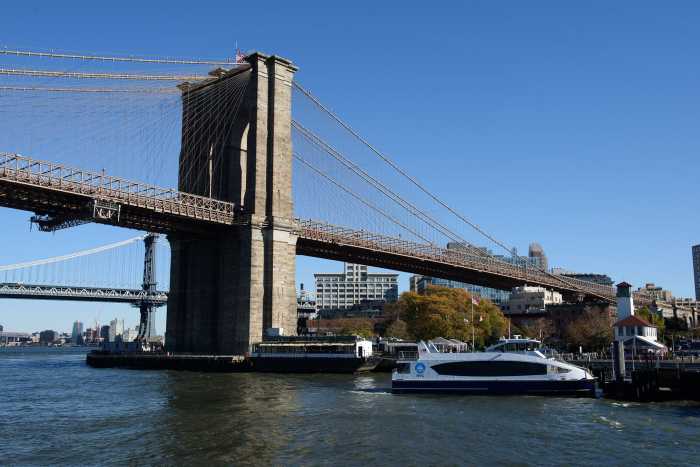The construction that’s been bottlenecking traffic on Grand Army Plaza for weeks will soon pay off for commuters — bike commuters, that is.
The city’s latest “traffic-calming” project — which will be completed by Labor Day — includes “bike connections” linking street cyclists to the park and park cyclists to the street.
One new bike lane connects cyclists exiting Prospect Park, near the eagle columns, to the Prospect Park West bike lane by adding a path through the Grand Army Plaza farmer’s market area.
The other links Plaza Street West — where the existing bike lane ends abruptly at the plaza — to the Prospect Park entrance by adding a short lane on Grand Army Plaza alongside two triangular-shaped medians that leads to a signal, where cyclists can cross the street and enter the park.
Cyclists are hailing the project as more than just roadway minutia — noting that a few yards of new green paint does wonders for bike safety on the sometimes-chaotic street.
“It’s such a good idea,” said Richard Rolling, a cyclist from Crown Heights, who complained that bike lanes in the area drop off at random before connecting to other lanes. “It keeps cars from running bikers off the road and bikers from hopping up on the sidewalk.”
The revamp — which was drawn up three years ago — also includes new crosswalks to shorten routes for pedestrians and a new stoplight to keep drivers from jockeying across four lanes of traffic on the Grand Army Plaza roundabout.
The tweaks became more clearly needed after the installation of the controversial Prospect Park West bike lane — the city’s last “traffic calming project.” As such, some drivers were fired up about the construction.
“It’s annoying,” said neighborhood maintenance worker Santos Maldonado. “It seems like the city is trying to eliminate cars.”
The changes stem from a striking amount of accidents occurring inside the plaza circle — a total of 39 in 2007 — according to city statistics.
That’s why Rob Witherwax of the Grand Army Plaza Coalition said the work is good for everyone on the busy street.
“It’s like rearranging furniture in your living room: Everything is still there — it’s just more efficient and logical,” he said.
A spokesman for the Department of Transportation declined to give the cost of the project.

























